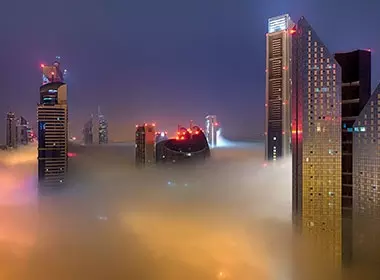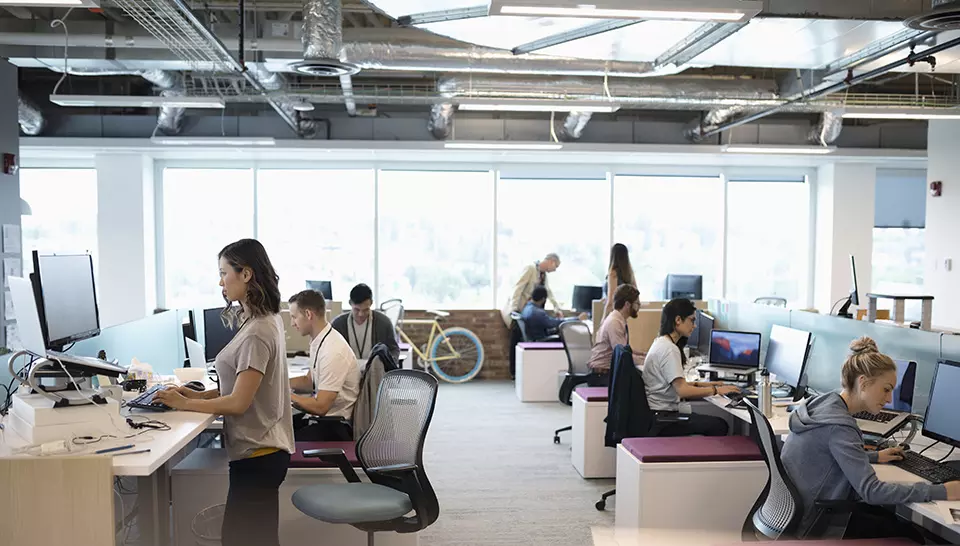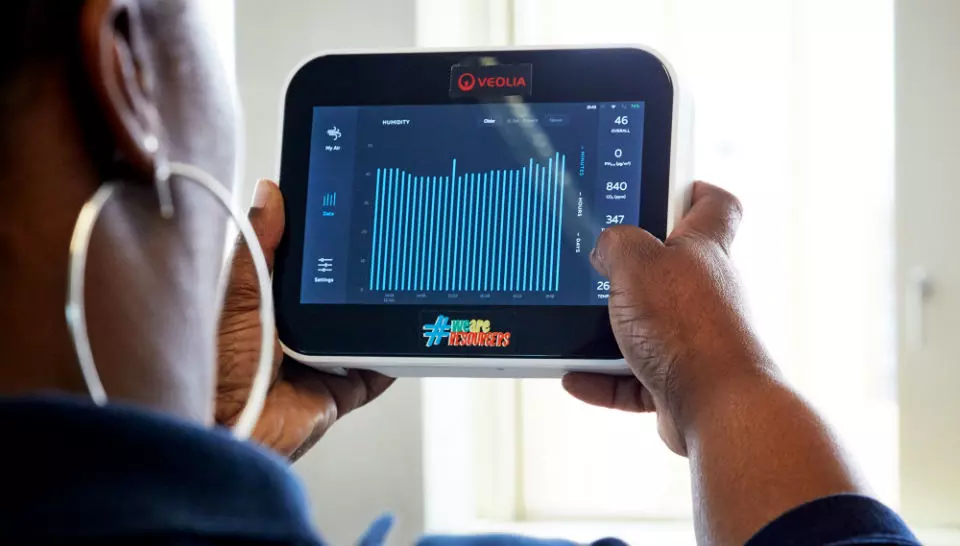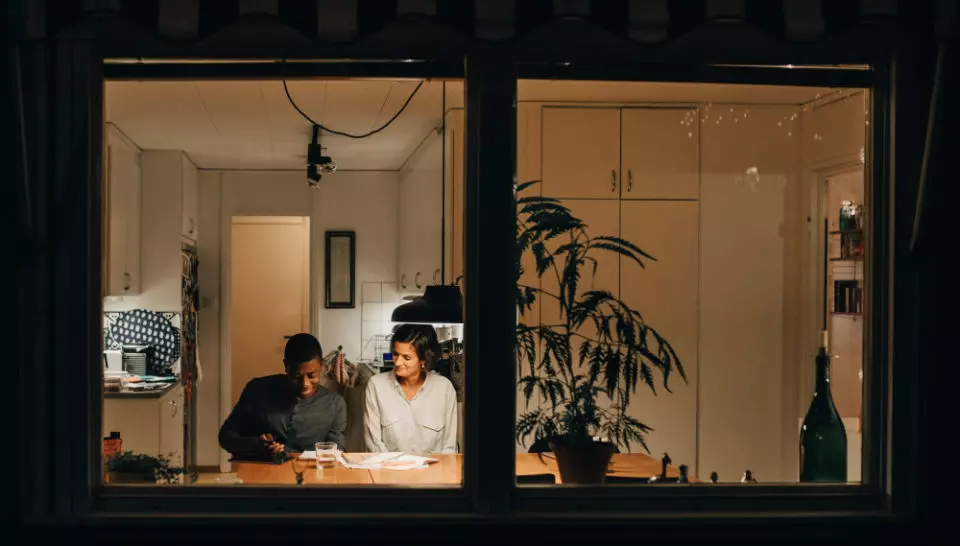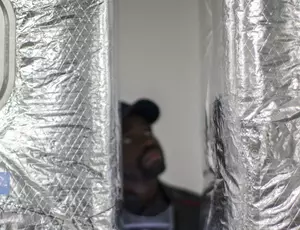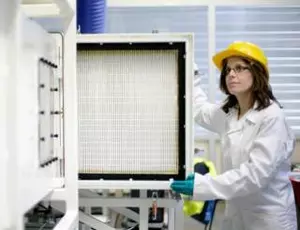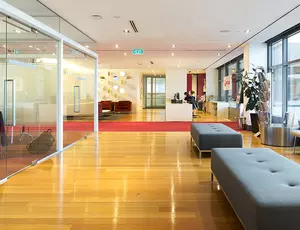The quality of the air we breathe is becoming a major public health issue in the world’s largest cities, and buildings are now being designed to reinforce their impermeability on an ever-rising scale. Paradoxically, this improves energy efficiency and, reportedly, provides protection from outdoor pollution. It nevertheless leaves a number of questions unanswered with regard to indoor air quality.
Can buildings really offer acceptable indoor air quality, while claiming to be completely airtight. Housing, which we look to for protection from outdoor air pollution, needs to be able to rely on innovations in the “monitoring” of buildings, at the risk of allowing indoor pollution to make the air unfit to breathe. AN OVERVIEW.
In 2009, Swiss architect Philippe Rahm reversed the indoor/outdoor relationship in architecture in his Terroirs Déterritorialisés (Deterritorialised Areas) project, by proposing to “recreate chemically and meteorologically (inside the building) the geology of Paris’s atmospheric conditions prior to the heavy pollution that occurred in the 19th century, as a natural phenomenon that is both filtered and regenerated.” This Parisian atmosphere, with its characteristic terrain and geological strata of limestone, Atlantic climate, westerly winds, oaks and chestnut trees … is a thing of the past. Accordingly, his project provides a means of identifying today the challenge that lies ahead when considering the indoor/outdoor porosity that exists in architectural schemes for urban areas.
Air pollution has become a major challenge to global public health, potentially leading to as many as 6.5 million premature deaths worldwide, according to a study published by The Lancet in October 2017. It is estimated that this figure could be as high as 7.5 million by 2040. And the risk does not concern outdoor air alone.
Today,
as many as 6.5 million premature deaths worldwide.
Estimation as 7.5 million of premature deaths by 2040
3 million could be caused by
indoor air pollution.
f the 7.5 million air pollution-related deaths in 2040, 3 million could be caused by indoor air pollution. The “natural atmosphere” prior to the industrial revolution no longer exists: human activity is responsible for the concentrations of abnormally high atmospheric pollutants, fine particles (PM10) and ultrafine particles (PM2.5), nitrogen oxide (NOx), sulphur oxide (SOx) and volatile organic compounds. These pollutants work their way inside and, unlike the air outside, are not subject to compulsory monitoring, except, since 2011 in France for certain pollutants — formaldehyde and benzene — and then only in buildings open to the public. They add to the pollutants already present indoors.
Citizens’ organisations, such as Respire, founded in 2011, which conducts awareness-raising and activist campaigns, are issuing an increasing number of warnings. And the movement is not just active in Europe. In China, there have been over 500 daily demonstrations to fight pollution since 2015. In New Delhi, the world’s sixth most polluted metropolitan area, protests are on the increase too, and the market for masks and indoor air purifiers is booming among the city’s middle and upper classes. While regulatory measures are not yet sufficient to tackle the public health problem, the issue of indoor air quality has surfaced in regional development and architectural projects. In early April, a UNICEF France online petition launched an appeal to protect children by making Low Pollution Emission Zones (LEZs) compulsory around the public areas they frequent. The report also cites the role of architecture, quoting a kindergarten in Strasbourg, whose facade has been raised as a screen against NOx in the playground.
Today, architectural projects, which can play a role in protecting us from outdoor pollution, nonetheless face an incongruous two-pronged constraint. The standards for reducing energy consumption, notably in France, which aim to cut consumption by 60% in service industries by 2050 (Elan Law), make it necessary to step up buildings’ insulation, thereby reducing the porosity of their outer structure to outdoor air. Draughts in older, poorly insulated buildings at least had the advantage of renewing the air inside. The risk, in these buildings that meet new ecological standards, is that for want of adequate ventilation and aeration systems, pollutants stagnate and accumulate, and can even trigger “unhealthy building syndrome” in the occupants’ homes. This syndrome can cause headaches, fatigue, eye, nose, throat and skin irritations, dizziness, allergic reactions and asthma, among others.
The risk, in these buildings that meet new ecological standards is that pollutants stagnate and accumulate, and can even trigger “unhealthy building syndrome” in the occupants’ homes.
The real objective of new home construction is, however, to ensure that the buildings act as a protective filter. Such is the challenge facing us in building the homes of tomorrow, a message that has already been clearly understood in a number of sectors. For example, Airlab, an air quality innovation platform set up by AirParif in 2017, as a public-private partnership, has opened up the field to new projects. In this context, Veolia and Icade have launched a call for projects, inciting start-ups to design a new generation of sensors that measure air quality and provide a continuous response to variations in air quality in office buildings: ventilation, indoor air recycling, measuring hygrometry, CO2, fine particles and volatile organic compounds. An open-innovation procedure has been tested in Veolia and Icade buildings since 2018.
Elsewhere, in extreme climate conditions where outdoor temperatures can reach 50°C during the summer months, Veolia is conducting an experiment at the Sheraton Grand Hotel in Dubai to dynamically control indoor air quality. The system, which uses around thirty sensors installed throughout the hotel — in rooms, restaurants, bars and spas — provides detailed data in real time on indoor air quality to make the hotel an oasis in the urban desert of the Emirates. In a context of climate change, indoor meteorology is fast becoming a prerequisite for habitability in increasingly dense urban areas.



